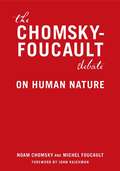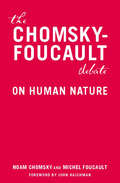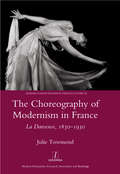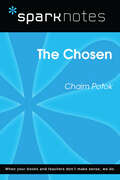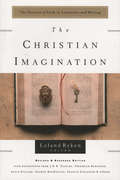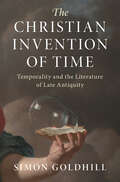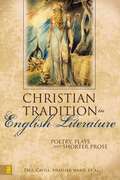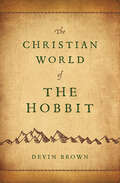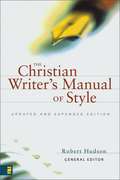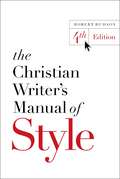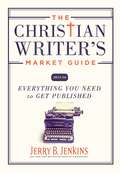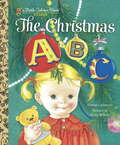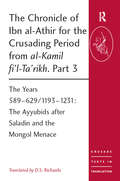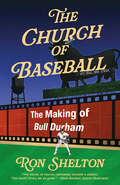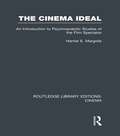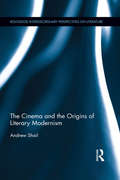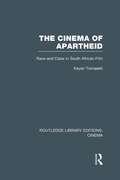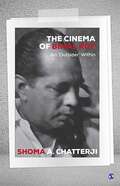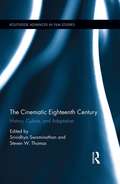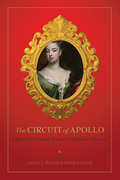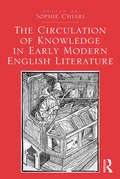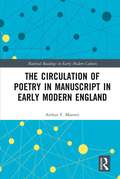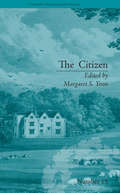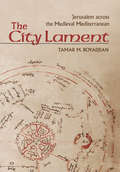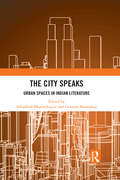- Table View
- List View
The Chomsky-Foucault Debate: On Human Nature
by Noam Chomsky Michel FoucaultTwo of the twentieth century's most influential thinkers debate a perennial question. In 1971, at the height of the Vietnam War and at a time of great political and social instability, two of the world's leading intellectuals, Noam Chomsky and Michel Foucault, were invited by Dutch philosopher Fons Edlers to debate an age-old question: is there such a thing as "innate" human nature independent of our experiences and external influences? The resulting dialogue is one of the most original, provocative, and spontaneous exchanges to have occurred between contemporary philosophers, and above all serves as a concise introduction to their basic theories. What begins as a philosophical argument rooted in linguistics (Chomsky) and the theory of knowledge (Foucault), soon evolves into a broader discussion encompassing a wide range of topics, from science, history, and behaviorism to creativity, freedom, and the struggle for justice in the realm of politics. In addition to the debate itself, this volume features a newly written introduction by noted Foucault scholar John Rajchman and includes additional text by Noam Chomsky.
The Chomsky-Foucault Debate: On Human Nature
by Noam Chomsky Michel FoucaultIn this historic 1971 debate, two of the twentieth century&’s most influential thinkers discuss whether there is such a thing as innate human nature. In 1971, at the height of the Vietnam War and at a time of great political and social instability, two of the world&’s leading intellectuals, Noam Chomsky and Michel Foucault, were invited by Dutch philosopher Fons Elders to debate an age-old question: Is there such a thing as &“innate&” human nature independent of our experiences and external influences? The resulting dialogue is one of the most original, provocative, and spontaneous exchanges to have occurred between contemporary philosophers. Above all, their discussion serves as a concise introduction to their two opposing theories. What begins as a philosophical argument rooted in linguistics (Chomsky) and the theory of knowledge (Foucault), soon evolves into a broader discussion encompassing a wide range of topics, from science, history, and behaviorism to creativity, freedom, and the struggle for justice in the realm of politics. In addition to the debate itself, this volume features a newly written introduction by noted Foucault scholar John Rajchman and includes substantial additional texts by Chomsky and Foucault. &“[Chomsky is] arguably the most important intellectual alive.&” —The New York Times &“Foucault . . . leaves no reader untouched or unchanged.&” —Edward Said
The Choreography of Modernism in France: La Danseuse 1830-1930
by Julie Townsend"Whether in the pages of a trashy novel, in the glow of gaslights, in a dance hall, or on the walls of art galleries, the figure of the female dancer haunts nineteenth-century French culture. Artists and writers of all kinds took on la danseuse as an emblem of their own artistic prowess. They represented her alternately as an elusive ideal, a saucy prostitute, or a dangerous seductress. Dancers, in turn, produced their own images, novels and autobiographies, thereby contributing to an ongoing cultural debate around performance, spectatorship, desire, and art. In this interdisciplinary study of la danseuse, Julie Townsend examines the rise and fall of classical ballet, the phenomenon of the music hall, and the birth of modern dance. She highlights moments of representational crisis and emergent aesthetics in her consideration of poetry, novels, painting, early film, and women's autobiography."
The Chosen (SparkNotes Literature Guide Series)
by SparkNotesThe Chosen (SparkNotes Literature Guide) by Chaim Potok Making the reading experience fun! Created by Harvard students for students everywhere, SparkNotes is a new breed of study guide: smarter, better, faster.Geared to what today's students need to know, SparkNotes provides:chapter-by-chapter analysis explanations of key themes, motifs, and symbols a review quiz and essay topics Lively and accessible, these guides are perfect for late-night studying and writing papers.
The Christian Imagination: The Practice of Faith in Literature and Writing
by Leland RykenThe Christian Imagination brings together in a single source the best that has been written about the relationship between literature and the Christian faith. This anthology covers all of the major topics that fall within this subject and includes essays and excerpts from fifty authors, including C.S. Lewis, Flannery O'Connor, Dorothy Sayers, and Frederick Buechner.
The Christian Invention of Time: Temporality and the Literature of Late Antiquity (Greek Culture in the Roman World)
by Simon GoldhillTime is integral to human culture. Over the last two centuries people's relationship with time has been transformed through industrialisation, trade and technology. But the first such life-changing transformation – under Christianity's influence – happened in late antiquity. It was then that time began to be conceptualised in new ways, with discussion of eternity, life after death and the end of days. Individuals also began to experience time differently: from the seven-day week to the order of daily prayer and the festal calendar of Christmas and Easter. With trademark flair and versatility, world-renowned classicist Simon Goldhill uncovers this change in thinking. He explores how it took shape in the literary writing of late antiquity and how it resonates even today. His bold new cultural history will appeal to scholars and students of classics, cultural history, literary studies, and early Christianity alike.
The Christian Tradition in English Literature: Poetry, Plays, And Shorter Prose
by Heather Ward Paul CavillFeatures: • Wide chronological coverage of English literature, especially texts found in the Norton, Oxford, Blackwell and other standard anthologies • Short, punchy essays that engage with the texts, the critics, and literary and social issues • Background and survey articles • Glossaries of Bible themes, images and narratives • Annotated bibliography and questions for class discussion or personal reflection • Scholarly yet accessible, jargon-free approach – ideal for school and university students, book groups and general readers Created for readers who may be unfamiliar with the Bible, church history or theological development, it offers an understanding of Christianity’s key concepts, themes, images and characters as they relate to English literature up to the present day.
The Christian World of The Hobbit
by Devin BrownIn his beloved story, The Hobbit, J.R.R. Tolkien takes readers into a world unlike any other, yet so much seems familiar. As Bilbo journeys there and back again, glimpses of the spiritual are seen. Previous guides to Tolkien's fiction have often made one of two wrong turnings: either they have entirely overlooked the Christian elements or they have claimed to find "Christian" elements everywhere, going far beyond the fundamental aspects that have been absorbed into the story. The Christian World of The Hobbit does what no book has done: it brings Tolkien fans new delight by introducing a side of Tolkien that is rarely explored but vitally important to his writings--especially to The Hobbit. Written by internationally regarded Tolkien scholar, Devin Brown, this approachable, witty, and highly entertaining. Click here to download the FREE Study Guide.
The Christian Writer's Manual of Style
by Robert HudsonAn essential tool for writers, editors, proofreaders, designers, copywriters, production managers, and marketers too. The Christian Writer’s Manual of Style is an essential tool not only for writers of religious materials, but for their editors, proofreaders, designers, copywriters, production managers, and even marketers. Rather than simply repeating style information commonly available in standard references, this newly updated and expanded edition includes points of grammar, punctuation, usage, book production and design, and written style that are often overlooked in other manuals. It focuses on information relating to the unique needs and demands of religious publications, such as discussions on how to correctly quote the Bible, how to capitalize and use common religious terms, and how to abbreviate the books of the Bible and other religious words. Also included are rarely found items such as: • an author’s guide to obtaining permissions • guidelines for using American, British, and Mid-Atlantic styles • discussions of inclusive language, profanity, and ethnic sensitivities • discussions of Internet and computer-related language style • a list of problem words • style issues regarding words from major world religions • a discussion of handling brand names in text • a list of common interjections • issues of type design, paper, copy-fit This edition has been completely updated since the 1988 edition and contains more than twice as much information as the previous edition. This is the most detailed and comprehensive guide of its kind.
The Christian Writer's Manual of Style: 4th Edition
by Robert HudsonThe standard style guide of the Christian publishing industry, The Christian Writer’s Manual of Style, 4th Edition, compiled by veteran Zondervan editor Robert Hudson, contains clear guidance on style questions related to religious writing, including many topics not addressed in other references or online. Nearly half of this fourth revision is made up of new material, including information about turning blogs into books, the effects of digital media on writing, “adverbial doubles,” “vanishing accents,” word-choice strategies, endorser guidelines, and much more. It also contains an all-new “Word List” which makes up more than a third of the book. The most needful information remains—entries on capitalization, abbreviation, citations, fictional dialogue, and more—but it has all been updated to keep pace with changes in English language usage. This fourth edition also corresponds with The Chicago Manual of Style, 16th Edition (2010), though it isn’t afraid to chart new territory where that reference is unhelpful on issues of religious writing. Comprehensive yet easy-to-use, The Christian Writer’s Manual of Style, 4th Edition, is a go-to resource for Christian authors, pastors, teachers, copy writers, editors, proofreaders, publishing and ministry professionals, executive assistants, and students—anyone who writes or edits as a part of their work or study—and for grammar aficionados everywhere.
The Christian Writer's Market Guide 2015-2016
by Jerry B. JenkinsFor more than 25 years, The Christian Writer's Market Guide has been the most comprehensive and highly recommended resource available for Christian writers, agents, editors, publishers, publicists, and writing teachers. Wherever an author is at on the spectrum of writing--from beginner to seasoned professional--this book will help them find what they are looking for. This is the must-have tool for getting noticed and published and the ultimate reference tool for the aspiring Christian writer. Detailed listings for more than 180 book publishers, subsidy publishers, and self-publishers Detailed listings for more than 170 periodicals by category with rates of pay Detailed listings for literary agencies, writing contests, conferences, workshops, editorial services, and writers' groups Extensive information on electronic and print-on-demand publishing 100 bonus pages filled with a wealth of how-to information, ideas, and tips
The Christmas ABC (Little Golden Book)
by Eloise Wilkin Florence Johnson"C" is for Christmas-y fun in this festive Little Golden Book reissue from 1962. Classic illustrations from Eloise Wilkin show her famously adorable toddlers decorating the tree, opening gifts, and running to the mailbox! Young readers will see themselves in this book as they learn their ABCs and aniticipate Santa's visit.
The Chronicle of Ibn al-Athir for the Crusading Period from al-Kamil fi'l-Ta'rikh. Part 3: The Years 589–629/1193–1231: The Ayyubids after Saladin and the Mongol Menace (Crusade Texts in Translation)
by D. S. RichardsThe Chronicle of Ibn al-Athir (1160-1233AD), entitled "al-Kamil fi'l-Ta'rikh", is one of the outstanding sources for the history of the mediaeval world. It covers the whole sweep of Islamic history almost up to the death of its author and, with the sources available to him, he attempted to embrace the widest geographical spread; events in Iraq, Iran and further East run in counterpoint with those involving North Africa and Spain. From the time of the arrival of the Crusaders in the Levant, their activities and the Muslim response become the focus of the work. A significant portion of this third part deals with the internal rivalries of the Ayyubid successors of Saladin, their changing relations with the Crusader states and in particular the events of the Damietta Crusade. As always, these events are portrayed against the wider background, with considerable emphasis on events in the eastern Islamic world, the fortunes of the Khwarazm Shahs and the first incursions of the Mongols.
The Church of Baseball: The Making of Bull Durham: Home Runs, Bad Calls, Crazy Fights, Big Swings, and a Hit
by Ron SheltonFrom the award-winning screenwriter and director of cult classic Bull Durham, the extremely entertaining behind-the-scenes story of the making of the film, and an insightful primer on the art and business of moviemaking. &“This book tells you how to make a movie—the whole nine innings of it—out of nothing but sheer will.&” —Tony Gilroy, writer/director of Michael Clayton and The Bourne Legacy&“The only church that truly feeds the soul, day in, day out, is the church of baseball.&” —Annie in Bull DurhamBull Durham, the breakthrough 1988 film about a minor league baseball team, is widely revered as the best sports movie of all time. But back in 1987, Ron Shelton was a first-time director and no one was willing to finance a movie about baseball—especially a story set in the minors. The jury was still out on Kevin Costner&’s leading-man potential, while Susan Sarandon was already a has-been. There were doubts. But something miraculous happened, and The Church of Baseball attempts to capture why. From organizing a baseball camp for the actors and rewriting key scenes while on set, to dealing with a short production schedule and overcoming the challenge of filming the sport, Shelton brings to life the making of this beloved American movie. Shelton explains the rarely revealed ins and outs of moviemaking, from a film&’s inception and financing, screenwriting, casting, the nuts and bolts of directing, the postproduction process, and even through its release. But this is also a book about baseball and its singular romance in the world of sports. Shelton spent six years in the minor leagues before making this film, and his experiences resonate throughout this book. Full of wry humor and insight, The Church of Baseball tells the remarkable story behind an iconic film.
The Cinema Ideal: An Introduction to Psychoanalytic Studies of the Film Spectator (Routledge Library Editions: Cinema)
by Harriet E. MargolisThis study explores the model derived from Freudian and Lacanian psychoanalysis, via Marxism and semiotics, of looking at film. It retraces the steps of film theory from ideological criticism of the late ‘60s to spectator studies in 1988 when the book was originally published. Psychoanalysis enables a discussion of the cinema’s role as a social and political force and this book enters a discourse of the politics of representation. Reconstructing discussion of basic issues, the book addresses our instincts and defences in reacting to cinema, the similarity between mental processes and cinematic technique, narrative techniques and the ‘cinematic apparatus’. Importantly, the book concerns itself with the concept of ideology and how the filmviewing experience engages the spectator in a complex net of stimuli presenting representations of an ideal world and the effect of this within film studies.
The Cinema and the Origins of Literary Modernism (Routledge Interdisciplinary Perspectives on Literature)
by Andrew ShailModernist writing has always been linked with cinema. The recent renaissance in early British film studies has allowed cinema to emerge as a major historical context for literary practice. Treating cinema as a historical rather than an aesthetic influence, this book analyzes the role of early British film culture in literature, thus providing the first account of cinema as a cause for modernism. Shail’s study draws on little-known sources to create a detailed picture of cinema following its ‘second birth’ as both institution and medium. The book presents a comprehensive account of how UK-based modernism originated as a consequence of—rather than a conscious aesthetic response to—this new component of the cultural landscape. Film’s new accounts of language, endeavor, time, collectivity and political change are first considered, then related to the patterns that comprised modernist texts. Authors discussed include Ford Madox Ford, Joseph Conrad, Wyndham Lewis, Ezra Pound, H.D., James Joyce, Virginia Woolf and Dorothy Richardson.
The Cinema of Apartheid: Race and Class in South African Film (Routledge Library Editions: Cinema)
by Keyan TomaselliThis study analyses the historical development of South African cinema up to he book's original publication in 1988. It describes the films and comments on their relationship to South African realities, addressing all aspects of the industry, focusing on domestic production, but also discussing international film companies who use South Africa as a location. It explores tensions between English-language and Afrikaans-language films, and between films made for blacks and films made for whites. Going behind the scenes the author looks at the financial infrastructure, the marketing strategies, and the works habits of the film industry. He concludes with a discussion of independent filmmaking, the obstacles facing South Africans who want to make films with artistic and political integrity, and the possibilities of progress in the future. Includes comprehensive bibliography and filmography listing all feature films made in South Africa between 1910 and 1985 together with documentary films by South Africans, non-South Africans, and exiles about the country.
The Cinema of Bimal Roy: An ′Outsider′ Within
by Shoma A. ChatterjiAn analysis of Bimal Roy’s films and their depiction of people outside the ‘mainstream’ The Cinema of Bimal Roy: An ‘Outsider’ Within examines Roy’s adaptations of Bengali and Hindi literary classics while dwelling on his approach and treatment of women, a focal point of many of his films. It draws attention to his cinema of social relevance—untouchability (Sujata), woman deserted by society and family (Biraj Bou), child marriage (Parineeta) and the inhumanity of oppression and forced urbanization (Do Bigha Zameen). The book goes on to discuss Roy’s ability to bestow new screen identities to established actors such as Nutan, Meena Kumari and Dilip Kumar on one hand and discover new talents such as Sunil Dutt, Sadhana and Tarun Bose on the other. Apart from this, his tutelage introduced many new faces to the film industry—Salil Choudhury, Hrishikesh Mukherjee, Nabendu Ghosh and Gulzar among others. Further, the book details the aesthetics of technique—cinematography, editing and sound—in Roy’s films; his movies had some of the best musical scores in Hindi cinema. It also analyses what made Madhumati his biggest commercial success.
The Cinematic Eighteenth Century: History, Culture, and Adaptation (Routledge Advances in Film Studies)
by Srividhya Swaminathan Steven W. ThomasThis collection explores how film and television depict the complex and diverse milieu of the eighteenth century as a literary, historical, and cultural space. Topics range from adaptations of Austen’s Sense and Sensibility and Defoe's Robinson Crusoe (The Martian) to historical fiction on the subjects of slavery (Belle), piracy (Crossbones and Black Sails), monarchy (The Madness of King George and The Libertine), print culture (Blackadder and National Treasure), and the role of women (Marie Antoinette, The Duchess, and Outlander). This interdisciplinary collection draws from film theory and literary theory to discuss how film and television allows for critical re-visioning as well as revising of the cultural concepts in literary and extra-literary writing about the historical period.
The Circuit of Apollo: Eighteenth-Century Women's Tributes to Women (Early Modern Feminisms)
by Katharine Kittredge Susan S. Lanser Betty A. Schellenberg Christine Gerrard Catherine Ingrassia Shelley King Claudia Thomas Kairoff Natasha Duquette Kathryn R. King Nicolle Jordan Laura TallonWritten by a combination of established scholars and new critics in the field, the essays collected in Circuit of Apollo attest to the vital practice of commemorating women’s artistic and personal relationships. In doing so, they illuminate the complexity of female friendships and honor as well as the robust creativity and intellectual work contributed by women to culture in the long eighteenth century. Women’s tributes to each other sometimes took the form of critical engagement or competition, but they always exposed the feminocentric networks of artistic, social, and material exchange women created and maintained both in and outside of London. This volume advocates for a new perspective for researching and teaching early modern women that is grounded in admiration.Distributed for the University of Delaware Press
The Circulation of Knowledge in Early Modern English Literature
by Sophie ChiariWith its many rites of initiation (religious, educational, professional or sexual), Elizabethan and Jacobean education emphasized both imitation and discovery in a struggle to bring population to a minimal literacy, while more demanding techniques were being developed for the cultural elite. The Circulation of Knowledge in Early Modern English Literature examines the question of transmission and of the educational procedures in16th- and 17th-century England by emphasizing deviant practices that questioned, reassessed or even challenged pre-established cultural norms and traditions. This volume thus alternates theoretical analyses with more specific readings in order to investigate the multiple ways in which ideas then circulated. It also addresses the ways in which the dominant cultural forms of the literature and drama of Shakespeare’s age were being subverted. In this regard, its various contributors analyze how the interrelated processes of initiation, transmission and transgression operated at the core of early modern English culture, and how Christopher Marlowe, William Shakespeare and Thomas Middleton, or lesser known poets and playwrights such as Thomas Howell, Thomas Edwards and George Villiers, managed to appropriate these cultural processes in their works.
The Circulation of Poetry in Manuscript in Early Modern England (Material Readings in Early Modern Culture)
by Arthur F. MarottiThis study examines the transmission and compilation of poetic texts through manuscripts from the late-Elizabethan era through the mid-seventeenth century, paying attention to the distinctive material, social, and literary features of these documents. The study has two main focuses: the first, the particular social environments in which texts were compiled and, second, the presence within this system of a large body of (usually anonymous) rare or unique poems. Manuscripts from aristocratic, academic, and urban professional environments are examined in separate chapters that highlight particular collections. Two chapters consider the social networking within the university and London that facilitated the transmission within these environments and between them. Although the topic is addressed throughout the study, the place of rare or unique poems in manuscript collections is at the center of the final three chapters. The book as a whole argues that scholars need to pay more attention to the social life of texts in the period and to little-known or unknown rare or unique poems that represent a field of writing broader than that defined in a literary history based mainly on the products of print culture.
The Citizen: by Ann Gomersall (Chawton House Library: Women's Novels #15)
by Margaret S YoonAnn Gomersall’s The Citizen (1790) is an epistolary novel, written over two volumes. Gomersall came out of the merchant class in Leeds and little else is known about her, but she began writing to raise funds for her merchant husband to re-enter business after he lost his money. This is the first modern critical edition of Gomersall’s work.
The City Lament: Jerusalem across the Medieval Mediterranean
by Tamar M. BoyadjianPoetic elegies for lost or fallen cities are seemingly as old as cities themselves. In the Judeo-Christian tradition, this genre finds its purest expression in the book of Lamentations, which mourns the destruction of Jerusalem; in Arabic, this genre is known as the ritha al-mudun. In The City Lament, Tamar M. Boyadjian traces the trajectory of the genre across the Mediterranean world during the period commonly referred to as the early Crusades (1095–1191), focusing on elegies and other expressions of loss that address the spiritual and strategic objective of those wars: Jerusalem. Through readings of city laments in English, French, Latin, Arabic, and Armenian literary traditions, Boyadjian challenges hegemonic and entrenched approaches to the study of medieval literature and the Crusades.The City Lament exposes significant literary intersections between Latin Christendom, the Islamic caliphates of the Middle East, and the Armenian kingdom of Cilicia, arguing for shared poetic and rhetorical modes. Reframing our understanding of literary sources produced across the medieval Mediterranean from an antagonistic, orientalist model to an analogous one, Boyadjian demonstrates how lamentations about the loss of Jerusalem, whether to Muslim or Christian forces, reveal fascinating parallels and rich, cross-cultural exchanges.
The City Speaks: Urban Spaces in Indian Literature
by Goutam Karmakar Subashish BhattacharjeeThis book studies the significance and representation of the ‘city’ in the writings of Indian poets, graphic novelists, and dramatists. It demonstrates how cities give birth to social images, perspectives, and complexities, and explores the ways in which cities and the characters in Indian literature coexist to form a larger literary framework of interpretations. Drawing on the theoretical concepts of Western urban thinkers such as Henri Lefebvre, Georg Simmel, Walter Benjamin, Edward Soja, David Harvey, and Diane Levy, as well as South Asian thinkers such as Ashis Nandy, Arjun Appadurai, Vinay Lal, and Ravi Sundaram, the book projects against a seemingly monolithic and homogenous Western qualification of urban literatures and offers a truly unique and contentious presentation of Indian literature. Unfolding the urban-literary landscape of India, the volume lays the groundwork for an urban studies approach to Indian literature. It will be of great interest to scholars and students of literature, especially Indian writing in English, urban studies, and South Asian studies.
